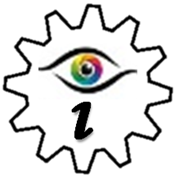
It is said that :
” One picture worth more than a thousand words“
Is this statement does not arouse in us the reflection and interest?
Let us pay attention to the importance of “image information” for our live. It is believed that it accounts for about 80% of all the information gained by our senses.
The concept of “information” is very important to the information society in which we live. Information became the third measurable category outside of matter and energy.
The question is how to effectively use image information in our daily lives or research.
An attempt to answer this question can be done in our team work under the so-called. Image Information Engineering.
The main areas of our activity > Virtual Technologies and Vision Systems:
– Virtual Technologies (AR, AV, VR) > Virtual Technologies- allow people to make direct perception of visual information.
– Vision Systems > support machine image processing.
Do you want to know more details about our activity? >we invite you here.
Want to quickly see the results of our experimental work?> we invite you here.
You have similar interests or run a similar work? > we invite you to cooperation.
Are you looking for opportunities to implement your ideas (even small and atypical ones 🙂 ) ? > contact us.
Are you interested in demonstrating the possibilities of virtual technology ? > watch our portal and contact us.
Are you interested in studying and working in Virtual Systems & Vision Systems technology ?> watch our portal and contact us.
The world around us hides many secrets from us
We often ask questions … that do not yet know the answer today.
- What factors influence the so-called simulator illness and what to do to minimize their impact on VR applications?
- Is it possible to measure the level of user engagement immersive VR applications and how to use this knowledge in the operation of the application?
We are looking for technical solutions allowing us to more effectively use information resources.
- Can HMI virtualization be the direction of developing interfaces more suited to our perceptual capabilities?
Answers to these and many other fascinating questions will appear periodically on our website 🙂
